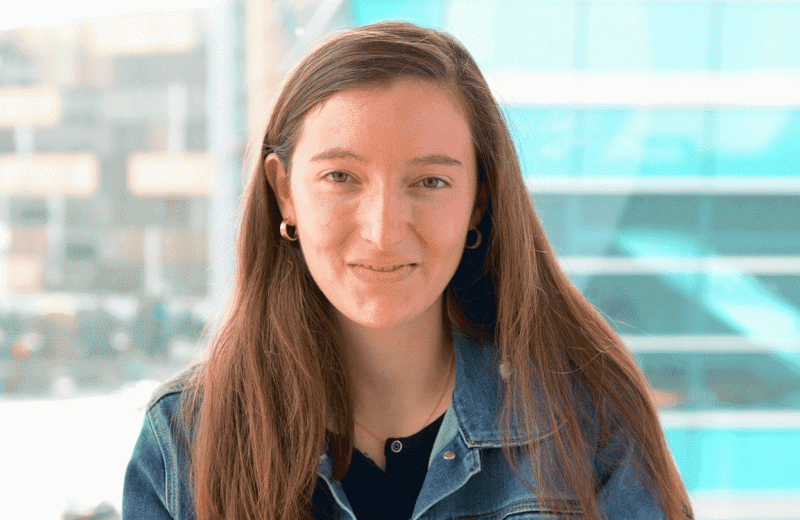Gladstone NOW: The Campaign Join Us on the Journey✕

SAN FRANCISCO, CA—Alzheimer’s, Huntington’s, Parkinson’s. Names forever linked to what they represent: diseases that ravage the brain’s neurons and leave entire regions to wither and die. These and other so-called neurodegenerative diseases are often associated with the buildup of toxic proteins that lead to neuronal death. But now, scientists at the Gladstone Institutes have discovered that the progression of disease is not due to the buildup of toxins itself, but rather in the individual neurons’ ability to dissolve them. Further, they have identified a therapeutic target that could boost this ability, thereby protecting the brain from the diseases’ deadly effects.
In the latest issue of Nature Chemical Biology, researchers in the laboratory of Gladstone Investigator Steve Finkbeiner, MD, PhD, describe how a newly developed technology allowed them to see—for the first time—how individual neurons fight back against the buildup of toxic proteins over time. Focusing their efforts on a model of Huntington’s disease, the team observed how different types of neurons in the brain each responded to this toxic buildup with different degrees of success, offering clues as to why the disease causes neurons in one region to die, while neurons in another are spared.
“Huntington’s—an inherited and fatal disorder that leads to problems with muscle coordination, cognition and personality—is characterized by the toxic buildup of a mutant form of the huntingtin protein in the brain,” explained Dr. Finkbeiner, who directs the Taube-Koret Center for Neurodegenerative Disease Research at Gladstone. Dr. Finkbeiner is also a professor of neurology and physiology at the University of California, San Francisco, with which Gladstone is affiliated. “A long-standing mystery among researchers was how the buildup of this mutant huntingtin caused cells to degrade and die, but previous technology made it virtually impossible to monitor this process at the cellular level. In this study, we employed a method called optical pulse-labeling, or OPL, which allowed us to see how the mutant huntingtin ravaged the brain over time—neuron by neuron.”
Using neurons extracted from rodent models of Huntington’s, the team employed the OPL method, which tracked the speed and efficiency with which different types of neurons were able to break down and dissolve the mutant huntingtin. The faster a cell cleared out the toxins, the longer the neuron survived.
Surprisingly, the research team noticed clear differences in the ability of different types of neurons to clear mutant huntingtin. Neurons located in the striatum—the region of the brain involved in movement that is primarily affected by Huntington’s—were particularly susceptible. However, neurons found in other regions, such as the cortex and cerebellum, were less so. And when they tracked the striatal neurons carrying the mutant huntingtin over time, they found them much more likely to die than those from other brain regions.
All cells depend on two main processes to clear excess proteins: the ubiquitin-proteasome system (UPS) and autophagy. Although their mechanisms are distinct, their goal is the same: to literally gobble up excess proteins, ensuring they are efficiently degraded so as to not to interfere with normal cellular activity.
The research team found that striatal neurons were particularly sensitive to disruptions to the autophagy process. But the team found a way around this problem. They artificially accelerated autophagy by boosting the activity of a protein called Nrf2 in these neurons, which in turn prolonged cell survival.
“If we could develop drugs that boost Nrf2 production in the neurons most susceptible to Huntington’s, we might extend their survival, thereby staving off the worst effects of the disease,” said former Gladstone Postdoctoral Fellow Andrey Tsvetkov, PhD, the study’s lead author. “Importantly, our results also demonstrate that the brain itself has evolved powerful coping mechanisms against diseases such as Huntington’s. For example, the fact that people don’t start experiencing symptoms of Huntington’s until the fourth or fifth decade of their lives—even though the mutant huntingtin is present at birth—is further evidence of the brain’s ability to stave off the effects of the disease.”
“Our findings are critical not only to inform us as to the underlying mechanisms behind diseases such as Huntington’s, but also to remind researchers that focusing on the disease-causing protein—and not how individual cells respond to it–is only one side of the coin,” added Dr. Finkbeiner. “To truly understand a complex disease like Huntington’s, we must also look to the brain’s naturally evolved defense mechanisms, which as we’ve shown here could represent an entirely new therapeutic strategy.”
Montserrat Arrasate, PhD, Sami Barmada, MD, PhD, and Punita Sharma, PhD, also participated in this research at Gladstone, which received support from the National Institute of Neurological Disease and Stroke, the National Institute on Aging, the Huntington’s Disease Society of America, the Taube-Koret Center for Neurodegenerative Disease, the Hereditary Disease Foundation, the Hilblom Foundation, the California Institute for Regenerative Medicine, the National Center for Research Resources and the James E. Bashaw Family.
Meet Gladstone: Shijie Wang
Meet Gladstone: Shijie Wang
Shijie Wang, a postdoctoral scholar in Steve Finkbeiner’s lab, uses artificial intelligence, robotics, and stem cell technologies to uncover how brain cells die in neurodegenerative diseases like Alzheimer’s and Parkinson’s.
Profile Neurological Disease Finkbeiner Lab AI Robotic MicroscopyScience in Seconds | The Thinking Microscope: Research Powered by an AI Brain
Science in Seconds | The Thinking Microscope: Research Powered by an AI Brain
In this video, Steve Finkbeiner and Jeremy Linsley showcase Gladstone’s groundbreaking “thinking microscope”—an AI-powered system that can design, conduct, and analyze experiments autonomously to uncover new insights into diseases like Alzheimer’s, Parkinson’s, and ALS.
Gladstone Experts ALS Alzheimer’s Disease Parkinson’s Disease Neurological Disease Finkbeiner Lab AI Big DataMeet Gladstone: Christina Buselli
Meet Gladstone: Christina Buselli
Research Associate Christina Buselli describes her work in the Finkbeiner lab, her path to science, and the questions she wishes she could ask her grandfather
Profile Finkbeiner Lab



